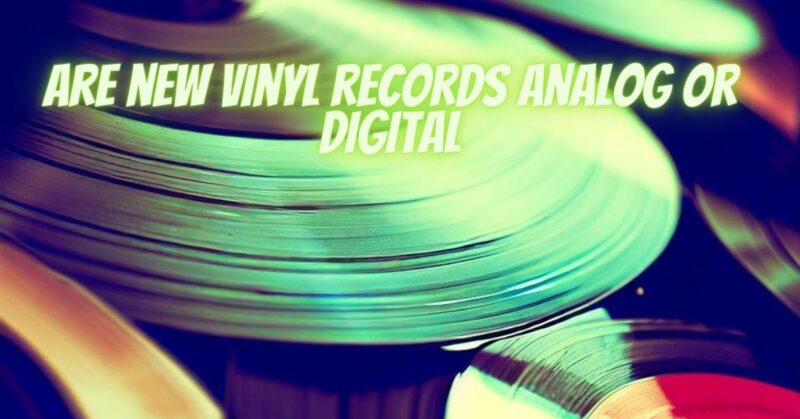In the resurgence of vinyl records, an intriguing question arises: Are new vinyl records analog or digital? As the music industry navigates a landscape defined by both cutting-edge digital technology and the nostalgic embrace of analog warmth, understanding the complexities of vinyl production is key. This article delves into the hybrid nature of new vinyl records, exploring how both analog and digital processes shape the final auditory experience.
1. Vinyl’s Analog Foundation:
Vinyl records are fundamentally an analog medium. The essence of their charm lies in their ability to capture the continuous sound waves of a recording, etching these waveforms onto the grooves of a vinyl disc. The analog nature of this process imparts a warmth and richness that many audiophiles and music enthusiasts find appealing. As the stylus tracks the grooves, it translates the physical variations into an electrical signal, which is then amplified and channeled through speakers to reproduce the sound. This analog signal path contributes to the distinctive sonic character of vinyl records.
2. Digital in the Mix:
While vinyl records are inherently analog, the journey from the original recording to the final pressing involves digital steps. The vast majority of music produced today begins its journey as a digital recording, whether through digital audio workstations (DAWs) or other digital methods. During the recording, mixing, and mastering processes, various digital tools are used to manipulate and enhance the sound. These digital processes allow for precise editing, correction, and manipulation of the audio.
3. The Vinyl Production Process:
To transform a digital recording into a vinyl record, an intermediate step is necessary: the creation of a master lacquer. This step involves cutting the grooves onto a lacquer-coated aluminum disc using a lathe. This cutting process translates the analog nature of the music into the grooves, but the information used for the cutting is derived from a digital source. This lacquer becomes the template for creating stampers, which are used in the pressing process to replicate the grooves onto vinyl discs.
4. Pressing and Playback:
During pressing, the stampers are used to press the grooves into vinyl pellets, resulting in the creation of the final vinyl records. These records are analog in nature, as the playback process involves the stylus tracing the grooves to generate an electrical signal. This analog signal then journeys through the amplification chain, eventually producing sound waves through speakers.
5. The Hybrid Experience:
In essence, new vinyl records are a marriage of analog and digital technologies. While the recording and mastering processes often involve digital methods, the vinyl production process itself is rooted in analog. The unique sound profile of vinyl, characterized by its warmth, subtle distortions, and tactile engagement, stems from the analog journey of sound reproduction.
New vinyl records epitomize the harmonious blend of analog and digital technologies. They embrace the warmth and character of analog while acknowledging the efficiency and precision of digital processes. This hybrid nature results in a listening experience that speaks to both the past and the present, bridging the gap between nostalgia and innovation. As music enthusiasts revel in the resurgence of vinyl, they do so with an appreciation for the intricate dance between analog roots and digital advancements.


